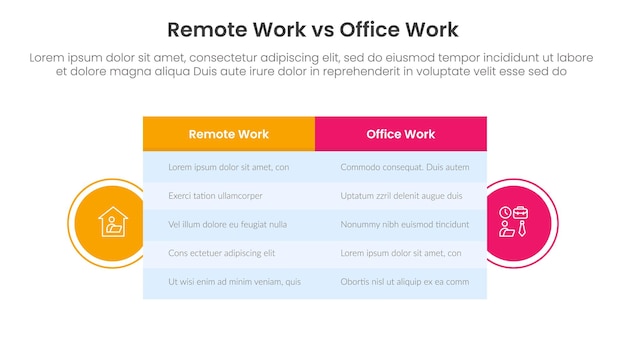Unlock ESPP Secrets & Snag a 15% Stock Discount

Unlocking the Secrets of Employee Stock Purchase Plans (ESPPs) for a 15% Discount involves understanding eligibility, contribution limits, purchase dates, and holding periods to maximize financial benefits and minimize potential risks, offering a straightforward path to employee stock ownership.
Interested in boosting your investment strategy with minimal effort? Unlocking the Secrets of Employee Stock Purchase Plans (ESPPs) for a 15% Discount can be a game-changer. Let’s explore how these plans work and how you can make the most of them.
What is an Employee Stock Purchase Plan (ESPP)?
An Employee Stock Purchase Plan (ESPP) is a company-sponsored program that allows employees to purchase company stock at a discounted price. Typically, this discount ranges from 5% to 15%, making it an attractive benefit for employees looking to invest in their company’s future.
Understanding the basics of an ESPP is crucial before diving in. Let’s explore how these programs work to give you a clearer picture.
How ESPPs Work
ESPPs operate on a simple yet effective mechanism. Employees contribute a portion of their salary over a specific period—usually ranging from a few months to a year. At the end of this accumulation period, the company uses the accumulated funds to purchase company stock on the employee’s behalf, often at a discount.
Key Components of an ESPP
- Enrollment Period: The time frame during which employees can sign up for the ESPP.
- Contribution Period: The duration over which employees contribute a portion of their salary.
- Purchase Date: The date on which the company purchases stock on behalf of the employees.
- Discount: The percentage by which the stock price is reduced for ESPP participants.

Essentially, ESPPs provide a straightforward method for employees to become shareholders, aligning their financial interests with the company’s success. By understanding these key components, employees can effectively leverage the benefits offered by ESPPs.
Navigating ESPP Eligibility and Enrollment
Before you can take advantage of an ESPP, it’s essential to determine if you are eligible and understand the enrollment process. Knowing the requirements and steps involved can ensure you don’t miss out on this valuable opportunity.
Let’s break down the eligibility criteria and provide a guide on how to enroll in an ESPP.
Eligibility Criteria
Most companies have specific eligibility requirements for ESPPs. These often include:
- Employment Status: Typically, ESPPs are available to full-time employees. Some companies may also include part-time employees who work a minimum number of hours per week.
- Minimum Service Requirement: Employees may need to work for the company for a certain period (e.g., 6 months, 1 year) before they become eligible.
- Exclusions: Highly compensated employees or those already participating in certain other stock-based compensation plans may be excluded.
The Enrollment Process
Enrolling in an ESPP usually involves the following steps:
- Review the Plan Document: Carefully read the ESPP document to understand the terms, conditions, and rules of the plan.
- Complete the Enrollment Form: Fill out the enrollment form, specifying the percentage of your salary you wish to contribute.
- Submit the Form: Submit the completed form to the HR department by the specified deadline.
Eligibility and enrollment are the first steps to participation. Once you’ve confirmed your eligibility and completed the enrollment process, you’re on your way to potentially benefit from the discounted stock purchase.
Maximizing Your 15% Discount: Contribution Strategies
One of the key advantages of an ESPP is the potential 15% discount on company stock. To make the most of this benefit, it’s crucial to develop effective contribution strategies that align with your financial goals.
There are a number of avenues to explore when considering contribution strategies. Below are a few strategies to consider.
Understanding Contribution Limits
ESPPs usually have limits on how much you can contribute. These limits are often expressed as a percentage of your salary or a specific dollar amount. For example, the IRS sets an annual limit of $25,000 worth of stock that can be purchased through an ESPP.
Strategies for Maximizing the Discount
- Contribute the Maximum Allowed: If your budget allows, contribute the maximum percentage of your salary to take full advantage of the discount.
- Consider the Look-Back Provision: Some ESPPs offer a “look-back” provision, which allows you to purchase stock at the lower of the stock price at the beginning or end of the offering period. Maximize contributions during periods when the stock price is expected to increase.
- Adjust Contributions Based on Financial Goals: Tailor your contribution amount to align with your overall investment strategy and risk tolerance.

Tax Implications of ESPP Contributions
Understanding the tax implications is vital when deciding on your contribution strategy. The discount you receive on the stock is generally taxed as ordinary income. Additionally, if you sell the stock at a profit, you may be subject to capital gains taxes.
By carefully considering contribution limits, discounts, and tax implications, you can optimize your ESPP participation and potentially achieve significant financial gains.
Understanding Purchase Dates and Holding Periods
Purchase dates and holding periods are critical aspects of ESPPs that impact your potential returns and tax liabilities. These elements determine when you acquire the stock and how long you need to hold it to qualify for favorable tax treatment.
Let’s delve into the details of purchase dates and holding periods to help you make informed decisions.
The Significance of Purchase Dates
The purchase date is when the company buys stock on your behalf using the funds you’ve contributed. This date is crucial because it determines the price at which you acquire the stock, especially if your ESPP has a look-back provision.
Holding Period Requirements
- Qualifying Disposition: To receive the most favorable tax treatment (long-term capital gains rates), you typically need to hold the stock for at least two years from the grant date (the first day of the offering period) and one year from the purchase date.
- Disqualifying Disposition: If you sell the stock before meeting these holding period requirements, it’s considered a disqualifying disposition. In this case, the difference between the market price at the time of purchase and the discounted price is taxed as ordinary income, and any additional profit is taxed as short-term capital gains.
Careful consideration of purchase dates and adherence to holding period requirements can significantly impact your tax liabilities and overall returns from the ESPP.
Potential Risks and Mitigation Strategies
While ESPPs offer attractive benefits, they also come with potential risks that participants should be aware of. Understanding these risks and implementing mitigation strategies is essential for making informed decisions and protecting your financial interests.
It’s critical to consider potential risks before fully committing to the strategy. Here are a few common risks.
Concentration Risk
Investing heavily in your own company’s stock can expose you to concentration risk. If the company performs poorly, your investment and your job could be at risk simultaneously. It’s wise to diversify your investments to mitigate this risk.
Market Volatility
Stock prices can fluctuate significantly, and the value of your ESPP shares can decline. Market volatility is an inherent risk in stock investing, and it’s important to be prepared for potential downturns.
Mitigation Strategies
- Diversify Your Investments: Don’t put all your eggs in one basket. Diversify your portfolio by investing in a variety of assets, such as stocks, bonds, and mutual funds.
- Monitor Company Performance: Stay informed about your company’s financial health and industry trends. This can help you make timely decisions about when to buy or sell your shares.
- Consider a Staggered Selling Strategy: Instead of selling all your ESPP shares at once, consider selling them gradually over time to reduce the impact of market volatility.
- Seek Professional Advice: Consult a financial advisor to develop a comprehensive investment strategy that aligns with your financial goals and risk tolerance.
By understanding and addressing these potential risks, you can navigate your ESPP participation with greater confidence and improve your chances of achieving your financial objectives.
Tax Implications of ESPPs: A Comprehensive Overview
Tax implications are a significant consideration when participating in an ESPP. Understanding how your ESPP benefits are taxed can help you make informed decisions and avoid potential surprises during tax season.
Let’s explore common tax considerations for ESPPs.
Ordinary Income vs. Capital Gains
The tax treatment of ESPP shares depends on whether you have a qualifying or disqualifying disposition.
- Qualifying Disposition: If you meet the holding period requirements (at least two years from the grant date and one year from the purchase date), the discount you received on the stock is taxed as ordinary income in the year of purchase. Any additional profit when you sell the stock is taxed as long-term capital gains, which typically have lower tax rates.
- Disqualifying Disposition: If you sell the stock before meeting the holding period requirements, the difference between the market price at the time of purchase and the discounted price is taxed as ordinary income. Any additional profit is taxed as short-term capital gains, which are taxed at your ordinary income tax rate.
Tax Reporting
Your company will typically report your ESPP-related income on your W-2 form. It’s essential to keep accurate records of your ESPP transactions, including purchase dates, sale dates, and stock prices, to ensure accurate tax reporting.
Consult a Tax Professional
Given the complexities of tax laws, it’s advisable to consult a tax professional or financial advisor who can provide personalized guidance based on your individual circumstances.
| Key Point | Brief Description |
|---|---|
| 📝 Eligibility | Check requirements like employment status & tenure. |
| 💰 Contribution | Decide on contribution % wisely, considering limits. |
| 🗓️ Holding Period | Adhere to holding period for tax benefits (qualifying disposition). |
| ⚠️ Risks | Diversify investments to mitigate concentration risk. |
Frequently Asked Questions (FAQs)
▼
Most ESPPs offer a discount ranging from 5% to 15% off the fair market value of the company’s stock. The specific discount can vary by company and plan terms.
▼
Enrollment periods usually occur once or twice per year, depending on the company. Check your company’s ESPP documents for specific enrollment schedules.
▼
If you leave the company before the purchase date, your contributions are typically returned to you. Consult your plan documents for the exact policy.
▼
Yes, you can sell your shares immediately, but selling before meeting holding period requirements results in a disqualifying disposition with less favorable tax treatment.
▼
No, contributions to an ESPP are not tax-deductible. However, the discount you receive may be taxed as ordinary income, and profits may be subject to capital gains taxes.
Conclusion
Unlocking the Secrets of Employee Stock Purchase Plans (ESPPs) for a 15% Discount can be a powerful tool for wealth accumulation. By understanding the intricacies of eligibility, contributions, holding periods, and tax implications, you can make informed decisions that align with your financial goals and maximize the benefits of this valuable employee program.





